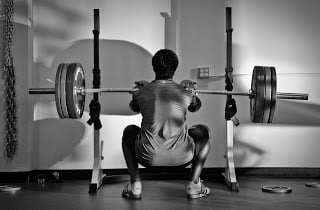
Perhaps the biggest source of confusion in training is the assumed correlation between the difficulty of a movement and its benefit for injury prevention and sport performance. For example, running long distances is grueling, but only helpful if you participate in cross country or marathons. Another situation is the increased use of instability toys, such as balance boards and inflatable discs or balls, in every population from mothers to professional athletes. It is easy to understand why people have gravitated to these exercises because they are difficult and pose a challenge. Try squatting on a ball or disc, and you will be determined to get back on it after you fall. I cannot argue with the difficulty of adding instability devices to a movement, yet the rationale of such exercises to improve the body’s stability is flawed, and there are better choices.
Canada is one of the leading countries in sports science, and their Exercise Physiology society released a 2010 statement on the best practices to improve stability. The review discusses how the same, if not higher, core muscle activation found in unstable conditions can be achieved with ground-based free-weight exercises, such as Olympic lifts, squats, and dead lifts. The position continues to explain that the addition of unstable bases to resistance exercises can decrease force, power, velocity, and range of motion, the very characteristics that make ground based exercises effective. Therefore, in weightlifting, you can get the same injury prevention benefits from stability, yet further bolster your resilience by greater increases in strength, flexibility and stiffness.
While the lower loads and controlled tempo of unstable surfaces could play a role in the first couple weeks of rehabilitation periods, such as directly after surgical procedures, the intense nature of sport requires higher speeds and weights to truly prepare and protect the body.
We must remember to prioritize our training choices, as time is the true obstacle in all of our lives. Others might spend their workout hour falling on and off an inflatable disc, believing the difficulty must translate to the greatest gains in injury prevention and performance. Meanwhile, our athletes will just continue to refine their weightlifting technique to become more stable, more flexible, and faster, and all this occurs within the same movement!